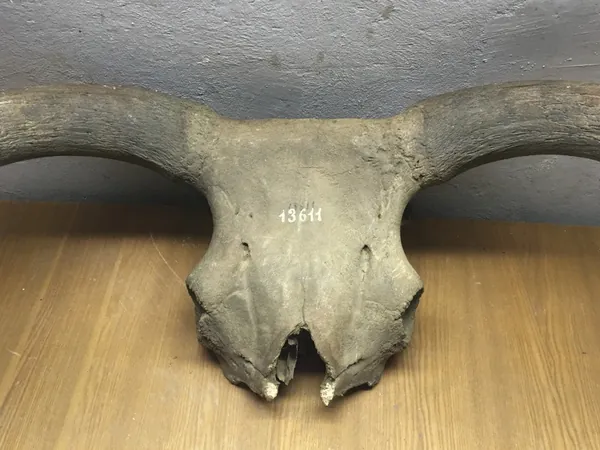
Astonishing Discovery: Early Aurochs Unveil Hidden Genetic Treasures!
2024-10-31
Author: John Tan
Scientists at Trinity College Dublin (TCD) have made groundbreaking revelations about the ancient aurochs, the formidable ancestors of modern cows, whose genetic diversity is far richer than previously imagined. This exciting study, spearheaded by Professor Dan Bradley’s team in the School of Genetics and Microbiology, provides fresh insights into the evolutionary narrative of these magnificent creatures.
Uncovering Genetic Diversity
The aurochs, renowned from ancient cave paintings, roamed the Earth until their extinction around 400 years ago, leaving behind a legacy shrouded in mystery. Through genetic analysis of 38 genomes extracted from ancient aurochs bones, researchers have uncovered that what was once deemed a single population of European aurochs actually comprises three distinct groups: Western European, Italian, and Balkan aurochs. This discovery transforms our understanding of their diversity and complexities.
Dr. Conor Rossi, a key contributor to this study published in Nature Communications, expressed the significance of these findings: "By sequencing ancient DNA, we gain profound insights into the diversity that existed in the wild and how it has shaped modern domestic cattle."
Migration Patterns and Common Ancestry
The findings also highlight a fascinating migration pattern. The study indicates that while fossils of the aurochs date back 650,000 years, populations from the eastern and western fringes of Eurasia share a more recent common ancestry, suggesting a migration from a South Asian origin around 100,000 years ago.
Climate Change: The Hidden Culprit
The research unearths the effects of climate changes in prehistoric times. The last Ice Age, which began approximately 100,000 years ago, initiated a divergence between the European and North Asian aurochs populations. This genomic analysis reveals a troubling trend: during the glacial period, aurochs populations dwindled, with European herds particularly vulnerable. The two distinct populations would not interbreed again until the Earth warmed approximately 11,000 years ago.
However, it was human intervention post-Ice Age that resulted in the most notable decline in genetic diversity among aurochs. As domestication progressed, only a fraction of maternal lineages survived—visible through mitochondrial DNA that passes from mother to offspring. Despite this bottleneck, the genetic base of early cattle was later enriched as herders migrated with their livestock, interbreeding with wild bulls and retaining aspects of the original four aurochs ancestries that influence today’s domestic cattle.
Historical Insights and Modern Relevance
Historically, Julius Caesar marveled at these awe-inspiring creatures, describing aurochs as “little below the elephant in size” due to their impressive strength and ferocity. Bradley notes that while Caesar may have exaggerated their size, it’s clear that the aurochs posed a formidable challenge for early humans attempting to tame them.
Unlocking the Secrets of the Ancient World
This study is just one example of how ancient DNA is revolutionizing our understanding of the past. Earlier this year, TCD PhD candidate Louis L'Hôte delved into another ancient mystery with an analysis of an 8,000-year-old sheep bone, revealing alarming insights about a harmful bacteria that may have evolved alongside agriculture—affecting not just livestock, but also human health.
As researchers continue to unearth the rich tapestry of our ancient environment, the lessons we learn from species like the aurochs will undoubtedly inform how we view biodiversity and the impact of climate changes on today’s ecosystem. The legacy of the aurochs—and their surprising genetic diversity—may serve as a critical element in the ongoing dialogue about conservation and genetic health in modern livestock.
Stay tuned as we explore more revolutionary discoveries that continue to reshape our understanding of history!



 Brasil (PT)
Brasil (PT)
 Canada (EN)
Canada (EN)
 Chile (ES)
Chile (ES)
 España (ES)
España (ES)
 France (FR)
France (FR)
 Hong Kong (EN)
Hong Kong (EN)
 Italia (IT)
Italia (IT)
 日本 (JA)
日本 (JA)
 Magyarország (HU)
Magyarország (HU)
 Norge (NO)
Norge (NO)
 Polska (PL)
Polska (PL)
 Schweiz (DE)
Schweiz (DE)
 Singapore (EN)
Singapore (EN)
 Sverige (SV)
Sverige (SV)
 Suomi (FI)
Suomi (FI)
 Türkiye (TR)
Türkiye (TR)